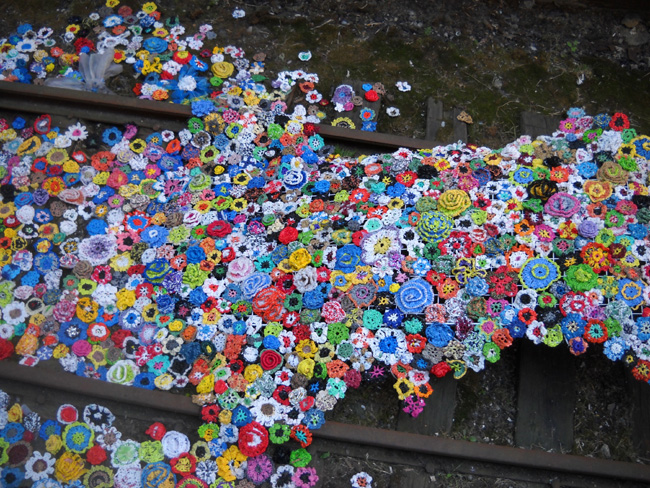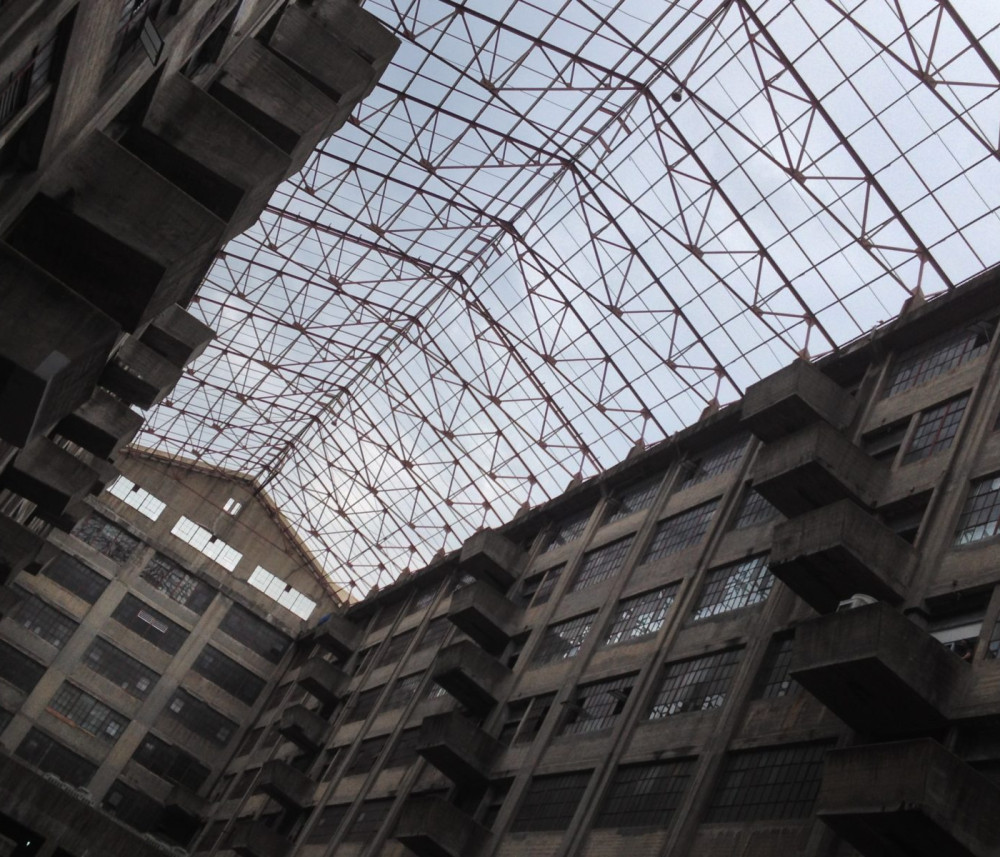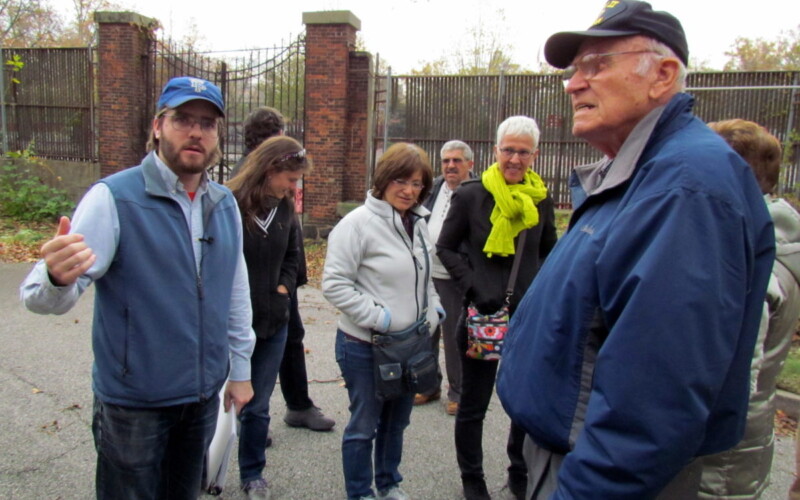If you walk the length of the atrium of the Brooklyn Army Terminal’s Building B during this weekend’s Open House New York, you will encounter a remarkable piece of art – Isabelle Garbani’s “Post-War Blues.”
Made up of more than 5,000 hand-crocheted and knitted flowers, the installation cascades from the train car parked on the atrium’s tracks, which once carried freight trains filled with war materiel into the Terminal’s warehouses and onto waiting ships along the Brooklyn waterfront.
Garbani is an artist in the Chashama art spaces in the Terminal, where she has had a studio for the past three years. A non-profit organization that provides low-cost spaces to visual and performance artists, Chashama currently has close to 100 artists at BAT working in a range of fields and mediums (and it’s part of BAT’s interesting history of the arts).
Originally from France, Garbani moved to the US more than 30 years ago. Her chosen medium is somewhat unconventional, especially for an artist trained as a sculptor: plastic. It appealed to her interest in dichotomies, because, as she says on her website, it is a “indispensable” and “completely unnecessary”; a sign of our “achievement” and “failure.”
“You’re never able to find something that is pure goodness or pure evil, and plastic represents that,” she told me when we sat down for lunch at the Terminal earlier this week.
“I wanted to find a material that was representative of America in the 21st century.” Plastic is at once a useful, space-age material – Garbani cites invaluable applications in medicine and food packaging – and at the same time a very destructive force, produced from fossil fuels and polluting oceans across the globe. Post-War Blues is made up of 2,000-3,000 plastic bags, all picked from trash. While its an admirable recycling effort, in New York City, we use an estimated 5.2 billion plastic bags each year; we are literally drowning in the stuff.
Because plastic is such a soft, pliable material, it was not suited for sculpture, so she decided to make it into a sort of yarn and weave it together in various ways. While she made a lot of the flowers herself, she also had some help – Garbani did eight weeks of workshops at the Brooklyn Public Library branch in Sunset Park where kids and their families could help craft flowers, as well as monthly get-together’s at Pete’s Brooklyn Eats in BAT for workers to come and help out. Employees from the BAT daycare center, and participants in programs for the Guild for Exceptional Children and Four Seasons Adult Day Care in Bay Ridge also chipped in (the project also received support from the Brooklyn Arts Council). If you want to contribute to the installation, you still can – she’s happy to show how the flowers are made so you can make them at home. It’s expected to be up well into 2016, so over that time, flowers will have to be replaced as they weather.
The piece itself is a marvel, but we cannot neglect the setting. The Army Terminal presented an interesting space to explore dichotomies, between its history as military installation and its use today as a civilian industrial park. We face this dilemma in modern society, Garbani noted, that so much or our modern life is tied up with war – products, materials, and technologies that were invented for a military purpose pervade our everyday lives.
“My goal is life was not to be an artist,” she said. “My goal in life was to do something that could not be used by the military.”
By placing these soft, delicate, colorful flowers, scattered amidst the stark concrete walls and the steel train, it evokes images of peace activism from another era, like Bernie Boston’s iconic 1967 photo of anti-war protestors inserting flowers into the barrels of guns being pointed at them by Military Police outside the Pentagon.
The Brooklyn Army Terminal atrium will be open during Open House New York, Saturday, October 17, 10am-6pm. Turnstile Tours will be leading 45-minute guided tours of the atrium every hour on the hour throughout the day. If you plan on driving to BAT, parking as available on Pier 4, located at the foot of 58th Street near the junction with 1st Avenue in Sunset Park, Brooklyn.







